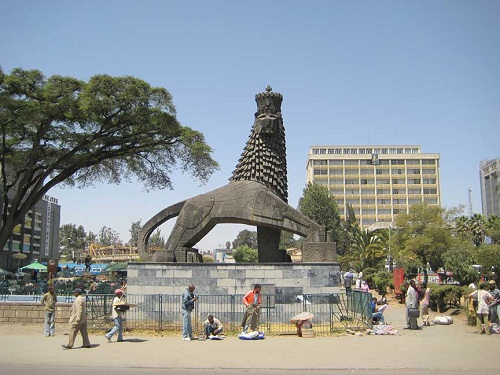
BY TSEGAY HAGOS
The dazzling beauty of Addis Ababa (“New Flower” in Amharic) could be vividly gazed standing at top of mount Entoto. Currently, the city is rushing in a very fast pace to categorize itself as one of the beautiful and hospitable metropolitan areas of Africa. The home for more than 5 million inhabitants, the Ethiopian capital is on fastest ever construction boom. The young demographic base, temperate climate, friendly people, hot springs, mesmerizing parks, squares and many other manmade and natural gifts of Addis have created ample opportunity for tourists and foreign dignitaries to live happily.
Addis has passed through many up and downs. Overcoming all tribulations, now the city become the main financial center of Ethiopia and the diplomatic hub of Africa. Continental and International organizations have opened their headquarters in Addis. Nowadays the capital hosts the African Union (AU), the Economic Commission for Africa (ECA), the Federation of African Societies of Chemistry (FASC) and Horn of Africa Press Institute (HAPI) and other organizations.
The city is found in the central part of Ethiopia. Its strategic location especially its closeness to the port of Djibouti is another crucial factor to be selected capital and business center of the nation. Mekibib Gebremariam, Senior Expert of Heritage Research at Addis Ababa Culture and Tourism Bureau said that when Emperor Menelik II had chosen Addis to be his capital in 1886, it was not inhabitable area full of jungles with various wild animals. But the wife of Menelik Empress Taytu Bitul was impressed with the beauty of the area.
“She built a house for herself near the ‘Filwoha’ hot mineral springs, where she and the Showan Royal Court liked to take hot spring baths. Other nobility and their staff started to settle there and the emperor expanded his wife’s home to be National Palace, which still remains the seat of the Ethiopian government. The name changed to Addis Ababa and became Ethiopia’s capital officially when Menelik crowned as Emperor of Ethiopia,’’ Mekbib notes.

Addis contains historic monuments, palaces, royal homes, museums, market places theatres and other heritages site. As far as natural tourist attraction is concerned, mount Entoto, Qale Mountain, Bole Bulbula topography, plenty of splendid caves, Filwuha hot springs and others are among the best tourist destinations in Addis. Regarding to museums, the Ethiopian National Museum is another tourist destination of Addis.
Importantly, the museum encloses artistic treasures, valuable archaeological findings such as the fossilized remains of early human ancestor scientifically know as Australopithecus afarensis or locally known as Dinkinesh (Lucy). The 3.3 million years old fossil makes Ethiopia the home of the oldest humankind and it attracts tourist from various parts of the world.
As far as natural tourists destinations are concerned, Mount Entoto has astounding tourism significance and it has huge role in preserving biodiversity as well. It has several plant and animal species. It is also playing a vital role in conserving the fauna and flora of Addis and in reducing polluting gas emissions. What makes interesting is Entoto Park was built in an amazing way by the initiation of Prime Minister Dr.Abiy Ahmed, Mekibib highlights.
The park is fully outfitted with various indoor and outdoor facilities such as sport centers, library, restaurants, coffee shops, artificial lake and fountain walk ways, bike, scooter and cart roots. Most of these facilities were constructed using local materials. The park is already luring local and foreign tourists and supporting the service sector of the capital. Not only this, Unity Park, Friendship Park and Mesqel Square have been built over the last three years. Especially, Meskel Square project which consumed 2.6 billion Birr would add the city more beauty and vibration. Inaugurated by Prime Minister Dr. Abiy Ahmed on 13 June 2021 The project provides integrated facilities, including underground parking lot that accommodates 1,400 vehicles. In addition to this it will be expected to accommodate more than half a million people for religious and public outdoor holidays.
There are also royal homes, palaces, historic churches, monasteries and mosques in Addis Ababa. Besides, there are more than 20 museums. The Ethiopian Orthodox Church alone has opened 11 museums. These museums contain irreplaceable artifacts and heritages starting from King Sahle-Silasie, the father of Emperor Menelik II. There is also private museum known as Zoma Musuem. It holds Ethiopia’s natural blessings,” he explains.
“There are also ancient caves full of historical significance in different parts of Addis Ababa. We have seen them and there are activities to make them tourist destinations. For instance, there is large cave at Bole Arabsa. Heritages such as pottery products and other household articles were found in the caves,”
The Ethiopian Herald June 16/2021

